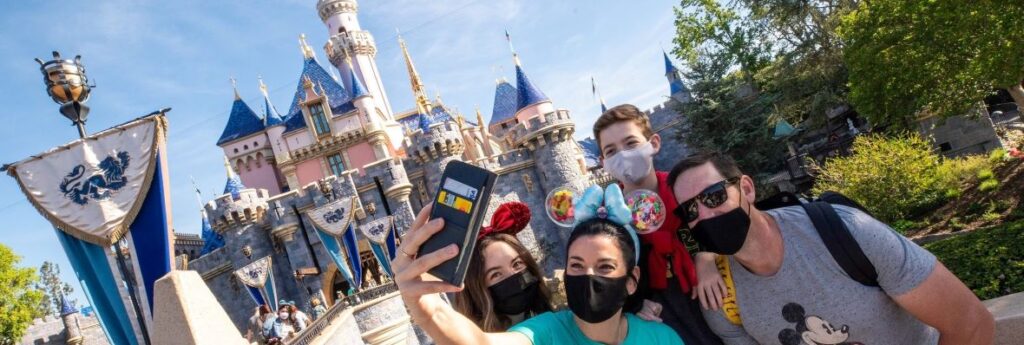Visitors cheered and screamed with delight as Disneyland unlocked its gates on Friday after an unprecedented 13-month closure. Many had been gathered outside the Anaheim, Ca., theme park since the previous night. The re-opening marked dramatic turnaround in a state that was so overwhelmed with coronavirus cases just four months ago that patients were being treated in gymnasiums and outdoor tents.
“Not having it for over a year was really kind of hard for us, and so it’s just really nice to be able to come back,” said Jaki Montanez, 27, who drove 547 km from Modesto, Ca., and wore sequined Minnie Mouse ears for the occasion.
The day began with Disney officials and park employees wearing face masks gathered in the park’s town square for the morning flag-raising ceremony. Disney CEO Bob Chapek thanked the colour guard for raising the flag daily throughout the 412-day closure and asked employees to “bring the magic back” for returning visitors.
For now, Disneyland is allowing only in-state visitors and operating at limited capacity. It has hand sanitizing stations and signs reminding guests to keep their distance and wear masks. Benches are marked as “designated dining areas” where visitors can remove face masks to eat.
Still, the reopening marks a big shift from December, when California’s COVID-19 case numbers were surging and hospitals across the state were running out of ICU beds.
“It has such a symbolic nature to really quantifying that we’re finally rolling out of COVID,” said Caroline Beteta, president and CEO of Visit California.
Now, the state boasts the country’s lowest rate of confirmed coronavirus infections and more than half of the population eligible for vaccination has received at least one dose. Children have been returning to school, shops and restaurants are expanding business, and Gov. Gavin Newsom set June 15 as a target date to further reopen the economy, albeit with some health-related restrictions.
Theme parks were among the last businesses allowed to reopen in California, and Universal Studios and others have already done so.
That’s a contrast to states with fewer restrictions such as Florida, where Disney World’s Magic Kingdom resort has been up and running, though at lower-than-usual capacity, since last July.
Another major US amusement park, Ohio’s Cedar Point, opened last summer and will do so again for the upcoming season – only this time, it won’t require masks on rides or outdoors where crowds can be avoided.
While California continues to “strongly discourage” anyone from visiting the state as tourists, the travel industry is banking on pent-up demand from its own nearly 40 million residents for a comeback. An advertising campaign encourages Californians to travel within the state, mirroring a pitch made after 9-11.
“It was very successful for us then, and we’re hoping it will be for us now,” Beteta said.
Disneyland is a major economic engine in California, drawing nearly 19 million in attendance the year before the coronavirus struck, according to the Themed Entertainment Association. It and other such attractions were shuttered in March 2020 as Newsom imposed the nation’s first statewide shutdown order.
The park and neighbouring Disney California Adventure reopened with a capacity that is currently capped at 25% under state health rules. Reservations are required, hugs and handshakes with characters are off limits, and the famous parades and fireworks shows have been shelved to limit crowding.
California currently allows residents and fully vaccinated out-of-state visitors to attend theme parks.
But in a state with so many people shut in for so long, even in-state tourism could be a huge boost. Plus, Disney’s California parks have long had a loyal local fan base while its Florida locations rely more heavily on international tourists, said Carissa Baker, assistant professor of theme park and attraction management at University of Central Florida’s Rosen College of Hospitality Management.
The reopening is also good news for theme park employees eager to get back to work and owners of hotels and shops in Anaheim.
“We’re not out of the woods, but at least we’re seeing some light for future,” said Jay Burress, president of Visit Anaheim.

